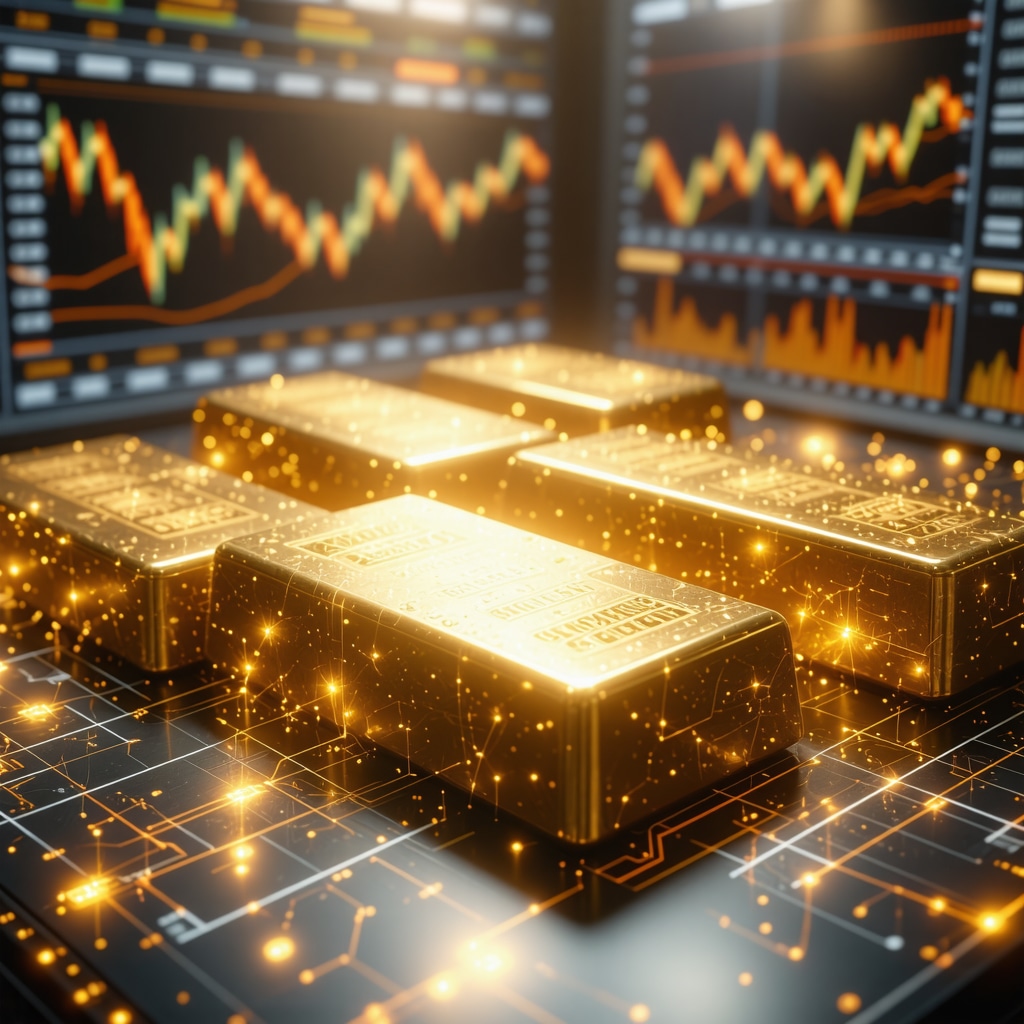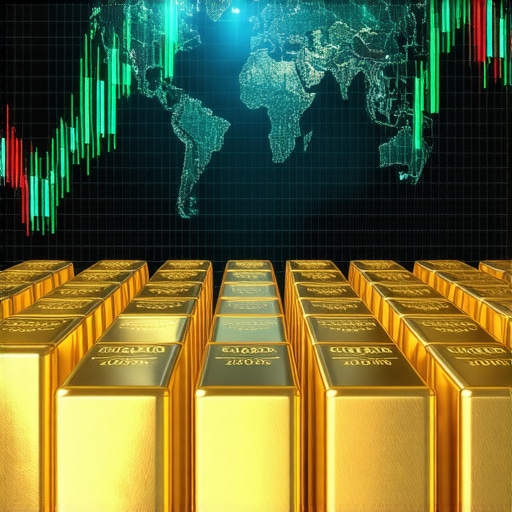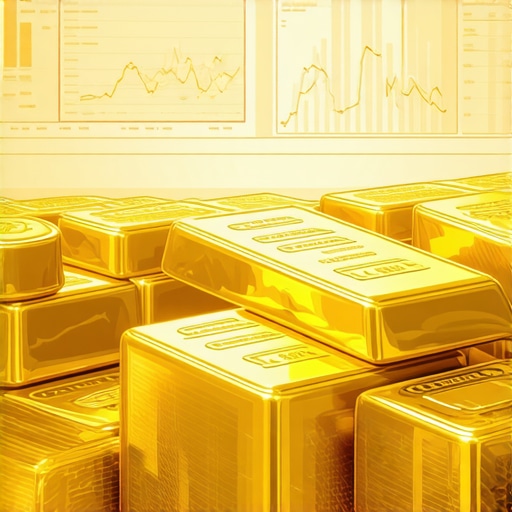Understanding the Complex Dynamics of the Gold Market in 2025
As we navigate through 2025, the gold market continues to exemplify a multifaceted interplay of macroeconomic, geopolitical, and technological factors. Recognized globally as a safe-haven asset, gold’s trajectory is now influenced by an evolving set of drivers that demand expert analysis and strategic foresight. This article delves into the key factors shaping the future of gold, providing investors and industry insiders with a comprehensive understanding rooted in data-driven insights and market expertise.
Macro-Economic Foundations and Their Impact on Gold Prices
One of the primary drivers of gold’s performance in 2025 remains the inflationary pressures stemming from expansive monetary policies and fiscal stimuli. Central banks worldwide, especially in emerging markets, are actively engaging in gold accumulation to diversify reserves and hedge against currency devaluation. According to the International Monetary Fund, gold reserves are expected to continue rising, reflecting a strategic shift towards tangible assets amid economic uncertainty (source).
Geopolitical Tensions and Their Role in Safe-Haven Demand
Geopolitical conflicts and regional tensions serve as catalysts for increased gold investment, with investors seeking stability amidst global unrest. The escalation of trade disputes, coupled with ongoing geopolitical flashpoints, reinforces gold’s status as a reliable store of value. These dynamics are compounded by the fluctuating US dollar index, which inversely correlates with gold prices, further complicating the market landscape.
Technological Innovations and Market Accessibility
Emerging fintech solutions and digital platforms have democratized gold investing, allowing a broader investor base to participate in the market. The proliferation of gold-backed exchange-traded funds (ETFs) and blockchain-enabled gold tokens exemplifies how technological advances are shaping investor behavior. This shift enhances liquidity, transparency, and market efficiency, which are critical for informed decision-making in 2025.
How Will Supply and Demand Dynamics Evolve in 2025?
The supply side remains constrained by declining gold ore grades and the high costs associated with mining operations. Conversely, demand trends are shifting, with increased consumption in jewelry markets, especially in Asia, and rising institutional interest in gold ETFs. Analyzing these supply-demand dynamics through reports like the World Gold Council’s latest data reveals a nuanced picture of potential price movements (source).
What are the Expert Predictions for Gold Price Movements in 2025?
Market analysts project a wide range of scenarios, with some predicting a bullish trend driven by inflation hedging and central bank purchases, while others caution about potential corrections due to strengthening of the US dollar or easing geopolitical tensions. Staying ahead requires continuous monitoring of macroeconomic indicators, policy shifts, and market sentiment.
For sophisticated investors seeking to optimize their holdings, exploring diversified strategies such as gold futures, physical bullion, or strategic allocations within gold IRAs can provide resilience against volatility. To deepen your understanding, consult our expert trading strategies guide.
As the landscape of gold investment becomes increasingly complex, engaging with authoritative sources and participating in expert forums will be vital for making informed decisions in 2025 and beyond.
Interested in expanding your expertise? Explore our comprehensive gold market analysis and forecast resources or contribute your insights to the discussion.
Unlocking the Nuances of Gold Supply and Demand in 2025
As we delve deeper into 2025, understanding the intricate supply-demand matrix becomes essential for seasoned investors aiming to optimize their gold portfolios. The gold market’s future trajectory hinges on multiple interconnected factors, including mining innovations, geopolitical shifts, and consumer behavior shifts, which collectively influence price movements and investment strategies.
What Role Will Mining Technology and Sustainability Play in Future Supply?
Advancements in mining technology, such as automation and sustainable extraction methods, are poised to reshape the supply landscape. These innovations aim to reduce costs and environmental impact, potentially alleviating some supply constraints. However, the high costs associated with discovering and developing new deposits continue to challenge supply growth. Industry experts warn that declining ore grades and geopolitical restrictions on mining expansion could keep supply tight, pushing prices upward if demand remains robust (source).
How Will Consumer and Institutional Demand Evolve in 2025?
Demand is increasingly diversified, with emerging markets like India and China driving jewelry consumption, while institutional investors expand their holdings in gold ETFs and futures. Central banks worldwide are also maintaining or increasing their gold reserves, viewing gold as a strategic asset amidst global uncertainties. The World Gold Council reports suggest that demand from both retail and institutional sectors remains resilient, even in the face of economic fluctuations, which could support sustained or rising prices (source).
Can Technological Innovation and Policy Shifts Disrupt These Trends?
Absolutely. The integration of blockchain technology in gold trading and the proliferation of digital gold products are transforming how investors access and utilize gold. Furthermore, policy shifts, such as central bank gold purchase programs or changes in taxation, could significantly alter the demand-supply outlook. For example, increased transparency and regulation in the gold market could either stabilize prices or create new volatility, depending on how these policies are implemented (source).
To stay ahead, investors should consider leveraging advanced analytical tools and expert frameworks to interpret these complex signals. Engaging with comprehensive analyses, like those found in our gold supply-demand insights, can provide a strategic edge in navigating this evolving landscape.
Interested in exploring practical investment frameworks? Discover our expert strategies for maximizing gold trading profits and refine your approach for 2025.
Innovative Technologies and Their Disruptive Potential on Gold Supply Chains
As the gold market evolves, technological advancements are not only streamlining extraction processes but also raising critical questions about sustainability and market stability. Automation, AI-driven exploration, and eco-friendly mining practices are beginning to reshape industry standards, promising increased efficiency and potentially more stable supply chains. However, these innovations come with their own set of challenges, including high initial capital investments and regulatory hurdles. According to a report by the International Council on Mining and Metals, sustainable mining technologies could reduce environmental impacts and operational costs, but widespread adoption hinges on supportive policies and technological breakthroughs (source).
Nuanced Shifts in Consumer and Institutional Gold Demand
Moving beyond surface-level trends, the nuanced behavior of demand reveals a complex interplay of cultural preferences, geopolitical risks, and macroeconomic policies. For instance, in India, government policies on gold import duties and tax incentives significantly influence jewelry consumption, while in China, institutional interest is increasingly driven by strategic asset allocation amid global uncertainties. Institutional investors, including pension funds and sovereign wealth funds, are diversifying their portfolios with gold-backed securities, reflecting a sophisticated risk management approach. The World Gold Council’s latest analysis emphasizes that these institutional shifts could catalyze sustained demand, especially if coupled with rising geopolitical tensions or inflationary pressures (source).
What are the implications of policy shifts on global gold demand trajectories?
Policy shifts, such as the implementation of central bank digital currencies or changes in import/export tariffs, have the potential to significantly alter demand dynamics. For example, increased transparency and regulation in gold trading could enhance market stability and attract institutional capital, yet abrupt policy reversals might trigger volatility. Investors should monitor policy developments closely, especially in major markets like India, China, and the US, where regulatory environments are evolving rapidly. Engaging with expert analyses and scenario planning models can help anticipate the impact of such shifts on gold prices.
For those seeking to deepen their understanding, exploring advanced analytical frameworks and participating in industry seminars can offer strategic advantages. Our detailed gold investment strategies guide provides actionable insights for navigating these complex policy landscapes.
Emerging Market Opportunities and Risks in Gold Investment
Emerging markets present both opportunities and risks for gold investors. Countries with burgeoning middle classes and expanding urban populations are driving increased demand for jewelry and investment gold. Conversely, political instability, currency devaluations, and regulatory uncertainties can pose significant risks. For instance, recent reforms in Southeast Asia and Africa have opened new channels for gold trade, but also introduced volatility and compliance challenges. Understanding these regional dynamics requires a granular analysis of local policies, economic indicators, and consumer behavior patterns.
How can investors leverage regional insights to optimize their gold portfolios?
By integrating regional economic forecasts with geopolitical risk assessments, investors can better position their portfolios to capitalize on emerging opportunities while mitigating potential downsides. Utilizing advanced data analytics and collaborating with regional experts can enhance decision-making accuracy. Furthermore, diversifying across different forms of gold—physical bullion, ETFs, and derivative contracts—can provide resilience against localized shocks. For a comprehensive approach, consult our regional investment strategies resource.
Interested in mastering the complexities of the global gold market? Engage with our expert community and access exclusive tools designed for seasoned investors seeking to stay ahead of the curve.
Deciphering the Impact of Quantum Computing on Gold Market Predictions
As technological frontiers expand, the advent of quantum computing promises to revolutionize data analysis in financial markets, including gold. Experts suggest that quantum algorithms could enhance predictive models for gold prices by processing vast datasets more efficiently, thereby offering traders a strategic edge. According to a detailed report by the Institute for Quantum Economics, integrating quantum analytics could lead to more accurate forecasting of market volatility and supply-demand shifts (source).
How Can Advanced AI and Machine Learning Refine Gold Investment Strategies?
Beyond traditional analysis, cutting-edge AI and machine learning techniques are increasingly employed to parse geopolitical signals, macroeconomic indicators, and market sentiment. These tools can identify subtle patterns and forecast price trajectories with unprecedented precision. Financial institutions leverage neural networks trained on multi-year data to simulate various scenarios, optimizing portfolio allocations. For investors willing to adopt these innovations, integrating AI-driven insights can significantly improve risk-adjusted returns.
What are the Emerging Risks of Digital Gold and Blockchain-Based Assets?
With the rise of blockchain-backed gold tokens and digital gold platforms, new vulnerabilities surface. Security concerns, regulatory uncertainties, and technological flaws could undermine trust and liquidity. Experts emphasize that rigorous due diligence, coupled with understanding the legal landscape, is essential when diversifying into these assets. The European Blockchain Observatory highlights that standardization and transparency are critical to mitigate systemic risks in this nascent sector (source).
What advanced measures should seasoned investors consider to safeguard their holdings amidst these technological innovations?
Institutional-grade cybersecurity protocols, diversification across physical and digital assets, and continuous monitoring of regulatory developments are indispensable strategies. Engaging with expert advisory services and leveraging scenario analysis tools can further enhance resilience. For a comprehensive approach, consult our detailed gold investment strategies guide.
Exploring the Geopolitical Nexus: How Global Power Shifts Influence Gold Dynamics
Power realignments, such as the rise of emerging economies and shifting alliances, exert profound influence on global gold flows. Countries adopting strategic reserves policies, or facing sanctions, often accelerate their gold accumulation, altering supply landscapes. The International Institute for Strategic Studies reports that geopolitical risk premiums embedded in gold prices are likely to persist as power balances evolve (source).
Can Central Bank Digital Currencies Reshape Gold’s Role as a Reserve Asset?
Central bank digital currencies (CBDCs) are poised to redefine monetary sovereignty, potentially affecting gold’s function within reserve portfolios. Some analysts argue that CBDCs could diminish the need for physical gold as a hedge, while others see them complementing gold holdings by enabling more efficient reserve management. The Bank for International Settlements’ recent publication underscores that the integration of CBDCs and gold could lead to new monetary stability paradigms (source).
How should investors adapt their strategies considering these profound shifts in monetary policy?
Proactive diversification, including allocation in physical gold, ETFs, and emerging digital assets, combined with vigilant monitoring of policy developments, is critical. Engaging with macroeconomic scenario planning and expert consultations can optimize resilience against evolving monetary landscapes. For further insights, explore our advanced trading strategies.
Expert Insights & Advanced Considerations
1. Digital Transformation in Gold Trading Enhances Market Transparency
Implementing blockchain and AI technologies is revolutionizing gold trading, leading to increased transparency, reduced counterparty risks, and more precise price discovery mechanisms. Industry experts emphasize that early adoption of these innovations can offer strategic advantages in high-volatility environments.
2. Geopolitical Shifts as Catalysts for Strategic Reserves Adjustment
Emerging geopolitical tensions are prompting central banks and sovereign funds to reassess their gold reserves, often increasing allocations as part of broader geopolitical risk mitigation strategies. Staying informed on these developments is crucial for strategic asset planning.
3. Sustainability and Technological Innovation Reshape Supply Dynamics
Advances in eco-friendly mining and automation are expected to gradually ease supply constraints, potentially stabilizing prices. Industry leaders highlight that sustainable practices are becoming a competitive differentiator, influencing long-term supply stability.
4. Diversification with Digital and Physical Gold Assets Mitigates Market Risks
Combining traditional physical bullion with emerging digital gold tokens allows investors to hedge against market volatility and liquidity risks. Experts recommend a balanced portfolio approach tailored to evolving market conditions.
5. Quantum Computing’s Potential to Transform Market Forecasting
Quantum algorithms promise to enhance predictive analytics, enabling more accurate forecasts of gold price movements by processing vast datasets efficiently. Early engagement with quantum research is advised for forward-looking investors.
Curated Expert Resources
- International Council on Mining and Metals: Offers authoritative insights into sustainable mining innovations and industry standards.
- Bank for International Settlements (BIS): Provides comprehensive reports on monetary policies and digital currency developments impacting gold reserves.
- European Blockchain Observatory: A valuable resource on blockchain applications and security standards in gold trading.
- Institute for Quantum Economics: Features research on quantum computing applications in financial market prediction models.
- World Gold Council: Delivers in-depth analysis on global gold demand and supply trends, including regional insights.
Final Expert Perspective
In the evolving landscape of the 2025 gold market, integrating cutting-edge technology with strategic foresight is paramount. Expert insights reveal that the confluence of digital innovation, geopolitical awareness, and sustainable practices will shape the future of gold investing. For sophisticated investors, staying engaged with authoritative resources and proactively adapting strategies will be key to maintaining resilience and seizing emerging opportunities. To deepen your expertise, explore our advanced trading strategies guide and participate in industry forums to exchange insights with peers. Embrace these insights to elevate your investment approach and secure a competitive edge in the dynamic 2025 gold market.










